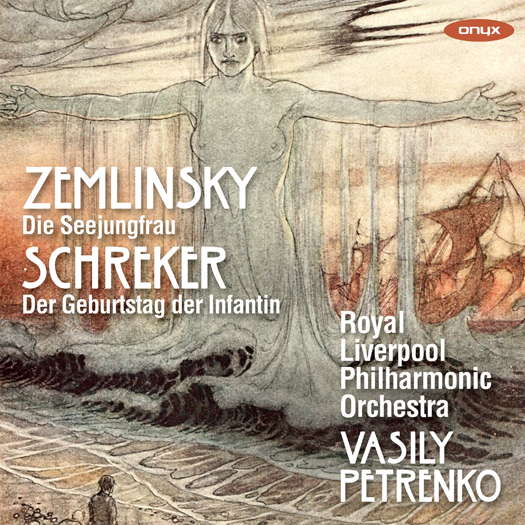 DISCUSSION: John Dante Prevedini leads a discussion about Music and the Visual World, including contributions from Celia Craig, Halida Dinova and Yekaterina Lebedeva.
DISCUSSION: John Dante Prevedini leads a discussion about Music and the Visual World, including contributions from Celia Craig, Halida Dinova and Yekaterina Lebedeva.
 DISCUSSION: What is a work? John Dante Prevedini leads a discussion about The performing artist as co-creator, including contributions from Halida Dinova, Yekaterina Lebedeva, Béla Hartmann, David Arditti and Stephen Francis Vasta.
DISCUSSION: What is a work? John Dante Prevedini leads a discussion about The performing artist as co-creator, including contributions from Halida Dinova, Yekaterina Lebedeva, Béla Hartmann, David Arditti and Stephen Francis Vasta.
- John Barbirolli
- J Jean Mayfield
- Charles Chaynes
- third century AD
- Joshua Guerrero
- Andrea Fages Saiz
- Konstantin Igumnov
- Ataollah Khadem Misagh

Truly Exciting
Music by Alexander von Zemlinsky and Franz Schreker, recommended by GERALD FENECH
'Petrenko has this music in his blood, and the performances have a sweep and power that keep you on the edge of your seat from beginning to end.'
Alexander von Zemlinsky (1871-1942) and Franz Schreker (1878-1934), apart from being contemporaries, were also two composers who contributed to the musical art nouveau in no small way. This CD is a prime example of what they achieved at the beginning of the last century, opening the way for the avant-garde and the New Vienna School.
The Mermaid is a fantasy in three movements and Zemlinsky wrote this exciting piece based on a short folktale by Hans Christian Anderson called The Little Mermaid. In April 1901 the composer began a romantic liaison with his pupil Alma Schindler. However, Alma broke off the relationship in November after meeting Gustav Mahler, and in March 1902 she subsequently got married. Die Seejungfrau was, in part, an expression of the heartbreak and sense of rejection that Zemlinsky experienced as a result.
Work was begun in February 1902, and the orchestration was completed in March 1903. The Mermaid was premiered on 25 January 1905 at the Musikverein in Vienna with the Wiener Konzertverein Orchestra conducted by the composer. The concert also included Pelleas and Melisande by Arnold Schoenberg, whose sister Matilde was eventually married to Zemlinsky. The critical response was mostly favourable, and further performances followed in Berlin and Prague in 1906 and 1907 respectively. Sometime after the Prague performance Zemlinsky withdrew the work. Later he gave the score of the first movement to his friend Marie Pappenheim as a gift. The other two movements he took with him to New York after fleeing Austria in 1938 to escape the Nazi persecution. These were eventually deposited along with the rest of Zemlinsky's manuscripts in the Library of Congress in Washington.
Listen — Zemlinsky: Sehr mäßig bewegt (Die Seejungfrau)
(track 1, 0:02-1:01) ℗ 2021 Onyx Classics:
For many years after the composer's death the score was presumed lost or destroyed, but in the early 1980s two British students, Keith J Rooke and Alfred Clayton, working separately, compared the items in Vienna and Washington and established that they belonged together. The first modern performance was given by the Austrian Youth Orchestra conducted by Peter Gulke in 1984. Since then, The Mermaid has become one of Zemlinsky's most frequently performed works and several recordings have entered the catalogue. As for the music, the work is enigmatic, lavish, densely orchestrated and with a fabulous feel for colour, but its greatest attribute is the sheer opulence of sound that makes it so thrilling.
Listen — Zemlinsky: Sehr gedehnt, mit schmerzvollem Ausdruck (Die Seejungfrau)
(track 3, 5:00-5:59) ℗ 2021 Onyx Classics:
It is ironic that Franz Schreker (1878-1934), a German composer of some controversial yet successful opera in both pre-war Vienna and inter-war Berlin, achieved his breakthrough with a ballet. After an encouraging early start with Vienna premieres of choral and orchestral works during the 1902-03 concert season Schreker's career ground to a halt, and by 1906 his works were no longer appearing on concert programmes. The composer had to turn to conducting to support himself, but with his being appointed Music Director of the newly founded Philharmonic Choir in the spring of 1908 an unexpected opportunity arrived. This twist of events was in the form of a commission for a prestigious 'Kunstschau' organized by a group of artists centred on the painter Gustav Klimt. The show, to take place during the summer of 1908, was to be not only their first combined activity in five years, but also a showcase for the newest artistic avant-garde after Klimt and his circle had left the Vienna Secession Movement in 1905. As such not only paintings, but also sculpture, formal gardens, musical concerts, plays and pantomime shows in an outdoor theatre were also on offer.
The most important work among all these was to be Schreker's commission. The Birthday of the Infanta, a ballet pantomime, was premiered on 27 August 1908, and Schreker got his inspiration from a strangely bizarre short story by Oscar Wilde. The work relates the tragedy of a dwarf who falls in love with a Spanish princess and who in the end dies of a broken heart after discovering that, because of his ugliness, he was just being used as an object of derision to entertain the princess on her birthday.
Listen — Schreker: Die Infantin im Kreise ihrer Gespielinnen
(Der Geburtstag der Infantin)
(track 4, 0:00-0:59) ℗ 2021 Onyx Classics:
The music is festive, sparkling and at times voluptuous, but that hint of sadness is never far away. Richly orchestrated, the piece has some enormously dramatic climaxes full of romantic ardour.
Listen — Schreker: Der Tod des Zwergs und Schlussszene
(Der Geburtstag der Infantin)
(track 15, 3:54-4:43) ℗ 2021 Onyx Classics:
Petrenko has this music in his blood, and the performances have a sweep and power that keep you on the edge of your seat from beginning to end. A truly exciting album seething with some spectacular sounds that will surely raise your heartbeat. Unmissable.
Copyright © 31 May 2021
Gerald Fenech,
Gzira, Malta

CD INFORMATION: ZEMLINSKY / SCHREKER / PETRENKO


